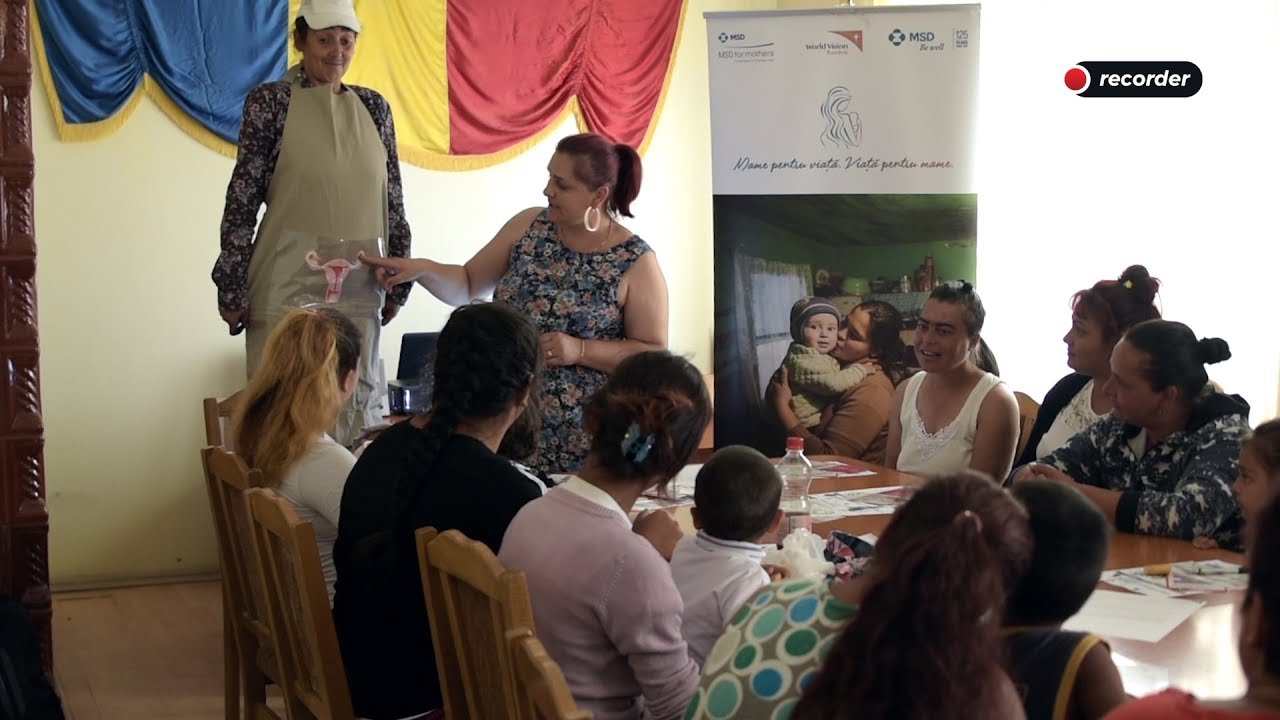Romania has made significant progress in empowering women, but challenges persist. This article will look at some of these issues in detail, including women’s access to education and work, the legal system, and the criminal justice system.
Discriminatory rules in Romania make it difficult for women to get jobs or start businesses, and restrict their capacity to make legal decisions.
Women’s Right to Vote
Since 1929, women have had the right to vote in local elections. In 1939 universal male suffrage was established in national elections, and the education census was abolished. In 1946, the constitution and electoral law were revised to place men and women on equal footing in terms of voting rights.
Despite this progress, women are under-represented at the national and local levels of political decision-making, and legislative reforms have failed to address this. Isolated discursive and legislative remedies have not been effective at increasing women’s representation in political life, while antigay rhetoric continues to galvanize conservative parts of society against female politicians and civil society actors.
Women can form political parties and join existing ones. In order to be elected to the Chamber of Deputies, senators, or local public administration bodies, a candidate must be at least 23 years old on election day and meet certain criteria. A citizen may propose a constitutional amendment and submit it to the Government or to one-fourth of the members of the Chamber of Deputies or Senate.
The constitution guarantees freedom of assembly. While the state has imposed some restrictions on gatherings during the pandemic, those restrictions were gradually loosened in 2021. Romania has an active civil society that operates without major formal restrictions, though groups that focus on human rights- and governance-related issues face funding shortages and hostility from some political and economic interests.
Gender Equality in Education
The introduction of gender studies into the academic landscape was relatively quick, starting in 1993 with the first feminism and gender classes at the University of Bucharest and then in other Romanian universities (Vacarescu, 2012). Since then, the number of gender courses and modules has increased significantly. Nonetheless, the research capacity in this field is still low. It is important to close these gaps for a better understanding of the actual situation and for advancing towards equality for women in all spheres.
The generation of academics who introduced these courses was a ‘Jane of all trades’, active in both academia and civic society. This link between scholarship and activism is still evident at the level of the Gender Studies programme at SNSPA, where most professors teaching gender classes are also actively involved on a civic level. This allows them to share their knowledge with their students and gives them a real life context for their work.
In Romania, as elsewhere in CEE, gender discrimination remains pervasive. In the labour market, women’s wages are lower and their employment rates are declining. Moreover, the traditional role of women as caregivers and housewives has remained in place for centuries, leaving them with less time to pursue careers. As a result, they may not be able to compete with men for higher-ranking positions or feel the need to display masculine traits to be taken seriously in male-dominated environments.
Gender Equality in the Workplace
Despite a global commitment to gender equality and significant progress over the past decades, there is still much work to do for women in the workplace. A key challenge is the continued prevalence of misogyny and patriarchy, which result in the exploitation of women workers and limit their economic opportunities. The introduction of gender pay gap reporting has brought more attention to the issue, but the world still needs more companies that genuinely care about gender equality and put this at the core of their business model.
Creating a culture that values diversity in the workplace can benefit businesses in many ways, including improved employee satisfaction, increased productivity and innovation, higher revenue growth, reduced attrition rates and more effective leadership. To help their workforce thrive, companies need to be flexible with working arrangements and locations, provide access to training opportunities and ensure that policies prohibit sexual harassment in all forms.
Increasing the number of women in senior management positions is also a critical step to closing the gender gap. This can be achieved through a variety of measures, including the creation of family-care policies that allow women to balance their career with their domestic responsibilities. Companies that prioritize the advancement of women are also more likely to close the gap between men’s and women’s hourly wage rates. The overall global gender gap will take 135.6 years to close at current rates.
Gender Equality in Health Care
Gender inequality in health care leads to stark disparities for women and girls who face unique and complex health challenges. These include pregnancy and childbirth, sexual- and gender-based violence, adolescent health, aging, mental health, and access to specialized medical care. Whether it is because of a lack of accessible healthcare or unconscious bias based on gender stereotypes, women and girls often do not receive the care they deserve.
The gap in access to opportunities and decision-making power is even more pronounced for women and girls living in poverty. Gender equality is critical to achieving the Sustainable Development Goals, including Goal 5 on reducing inequalities, specifically those related to health and economic opportunities, education, and governance.
Gender equality in the health sector is not only a human rights issue, but also essential for strengthening health systems and achieving UHC. Yet, it is challenging to achieve. Achieving health equity requires addressing both the social and structural issues that lead to inequalities, such as the gender pay gaps and segregation of occupations, and the increased risk of violence faced by women in remote and conflict-affected settings, as well as the elevated risks of human trafficking at home and abroad.
This is why the World Bank is focusing on gender equality in its work on healthcare, both in the immediate response to the pandemic and in broader efforts to strengthen health systems and deliver universal health coverage (UHC). For example, the Global Financing Facility (GFF), working with partners such as Women in Global Health, is supporting distribution of anti-retrovirals and family planning commodities and is rolling out the COVID-19 vaccine campaign among the most vulnerable communities.
Gender Equality in the Criminal Justice System
Gender issues are pervasive in the criminal justice system as a result of discriminatory laws and institutional practices that affect women disproportionately. These include sex specific provisions of criminal law and procedure, and a general perception that men are more likely to commit crime than women. Moreover, gender-discriminatory attitudes and stereotypes can lead to biased and uninformed decisions in the police force, courts, and prosecution services.
In particular, judges may adopt rigid concepts of family responsibilities and duties that rely on the assumption that women are caretakers, while men are breadwinners. This translates into the expectation that female offenders should be punished more harshly than their male counterparts (Coontz 1992; Filene 1986).
The fact that women are incarcerated at a higher rate than men has not changed traditional views on men’s role in society and on their unique vulnerabilities and risk factors that contribute to their offending behavior. Consequently, women continue to face a number of challenges at various stages of deprivation of liberty – from police investigations to court proceedings and to prison conditions – that can be linked to a lack of awareness of the need for a gender-sensitive approach to the criminal justice system.
The European Commission for the Efficiency of Justice (CEPEJ) is incorporating gender equality considerations into its evaluations of the justice systems of Council of Europe member states by introducing a questionnaire on the inclusion of gender perspectives in the training of judges and prosecutors and by publishing a Gender Equality Dashboard in 2016. Nevertheless, women remain under-represented in the top ranks of courts and judicial institutions, including as presidents and heads of prosecution offices.
Gender Equality in the Legal System
Women make up half the world’s population, and they also represent half of its potential. Gender inequality deprives societies of the fullest measure of their human capital and jeopardizes peace, prosperity and sustainable development. Providing women with equal access to education, justice and livelihoods is the key to advancing gender equality, and an essential prerequisite for enabling them to realize their rights.
While a number of countries have taken steps to advance their legal systems, a wide range of barriers still prevent women from realizing their rights. These include discrimination, stigma and harmful and patriarchal cultural norms that adversely affect women’s enjoyment of their human rights. Women continue to experience limited economic opportunities, as well as barriers related to childcare and family-friendly workplaces. In addition, violence against women can limit their ability to participate in society and in business.
Women face particular challenges in the criminal justice system, including lack of access to specialized police training in gender-sensitive interviewing techniques; delays in the reporting and processing of complaints and cases; inadequate representation in the judiciary (especially courts of first instance); lengthy pretrial detention periods; and unjust sentencing. To address these issues, countries should ensure that judges are trained in gender-sensitive jurisprudence, and that judicial processes take into account mitigating circumstances for women offenders. In addition, they should consider alternative measures to imprisonment for women offenders and provide adequate support and assistance to help them reintegrate into their communities.



